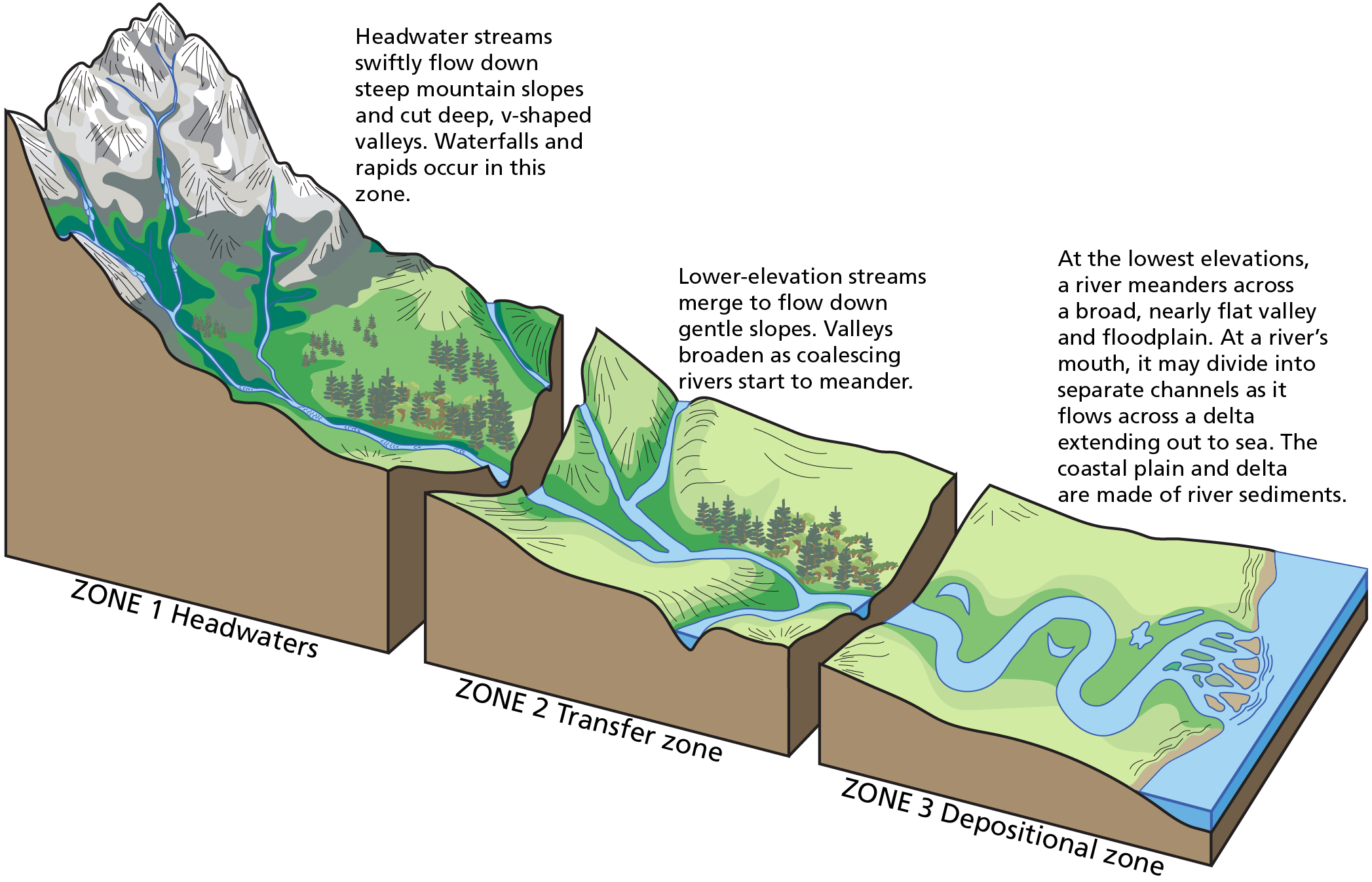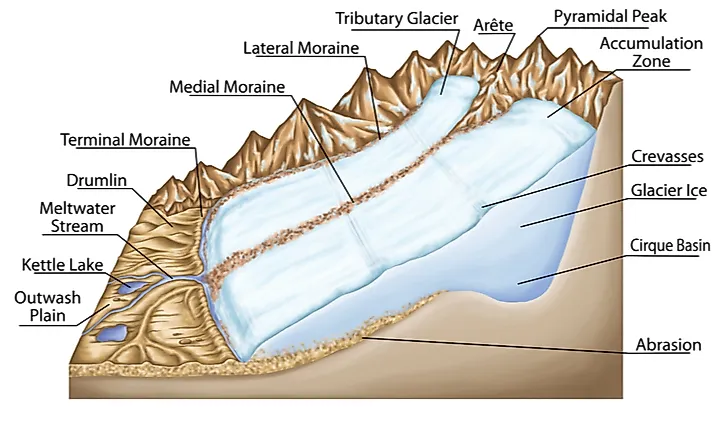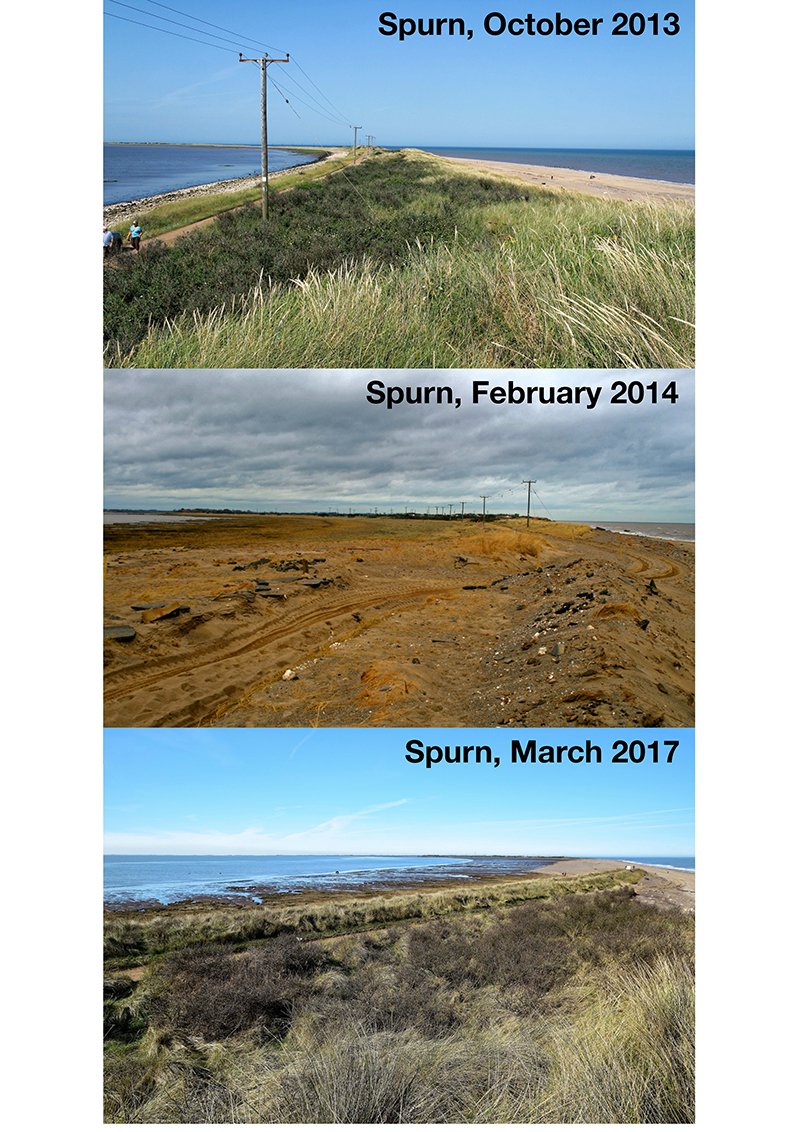They form various erosional destructional and depositional constructional landforms. The energy in a river causes erosion.

River Systems And Fluvial Landforms Geology U S National Park Service
Alluvial plains are vast sweeping stretches of plain land that are formed by the deposition of sediments called alluvium.

. Truncated delta On the basis of growth. The last ice age in the UK took place around 18000 years ago. Minor landforms include butte s canyon s valley s and basin s.
There are three main types of processes that occur in a river. Her she two been other when there all during into school time may years more most only over city some world would where later up. Types of landforms.
Depositional landforms are formed by the Fragments of soil regolith and bedrock that are removed from the parent rock and deposited somewhere else. Written By vukelj Wednesday March 9 2022 Add Comment Edit. The sediment created when glaciers grind down rocks is called glacial rock flour.
Erosion transportation and deposition the Hjulström Curve. The Indo Gangetic plain Indian sub-continent. Is the material that has fallen onto the side of a glacier and carried along by it.
This is what we refer to as the process of Coastal Deposition. These plains are formed by the deposition of sediments brought down by rivers. They are erosional forces because their ice carves the ground beneath them and on the sides which forms a U-shaped valley as with a valley glacier.
Arcuate delta Arcuate delta is triangular in shape. The outcome is a unique series of layers called topsets foresets and bottomsets. Riverine or alluvial plains are formed by river deposits.
Name and explain three types depositional landscapes. An alluvial plain usually includes floodplains as part of its area but extends beyond such plains. But on almost all coasts both deposition and erosion are happening to varying degrees most of the time.
Since sand is the coarsest its deposited close to the mouth of the river. The ecological landscapes known as deserts defined by very arid conditions of low precipitation and high evaporation include plentiful mountains plains plateaus and canyons that include distinctive sub-varieties of desert landforms. The plains formed by the filling up of sediments carried by agents of Erosion like wind rivers glaciers and underground water into depressions are called Depositional plains.
An alluvial plain represents the pattern of floodplain shift over geological time. Name three types. Glaciers are also depositional because their movement pushes rocks and other debris into new areas.
The finer sediment silt fine sand and clay is deposited next. This altitude may reach to several thousand metres from the sea level. Coastal deposition is when the sea drops or deposits material.
Coastal landforms of deposition occur where the accumulation of sand and shingle is greater than it is removed. Some coastal areas are dominated by erosion an example being the Pacific coast of Canada and the United States while others are dominated by deposition examples being the Atlantic and Caribbean coasts of the United States. There are three major types of landforms namely.
The beach is the area between the lowest spring tide level and the point reached by the storm waves in the highest tides. Cirque and cirque lake Horns and Serrated ridges Arêtes Glacial valleys troughs Hanging valley. This can include sand sediment and shingle resulting in landforms of coastal deposition.
These are erosion transportation and deposition. Terminal Moraine is deposited by the glacier at the snout as it retreats. The notion of water on Mars preceded the space age by hundreds of years.
During this time temperatures remained low throughout the year and ice sheets and glaciers covered the north of. Erosional landforms include headlands bays caves arches stacks stumps and wave-cut platforms. On the basis of shape.
Higher altitude and steep slopes are its main characteristics. Deposition is a geological process where soil rocks sand and other sediments become added to an existing landscape. The first to be deposited is sand which is the coarsest sediment.
Outer edges are like an arc of a circle or a bow. During the transportation of sediments and materials waves may sometimes lose energy and when they do sediments may drop out and begin to settle down. Glacial till Outwash deposits and plains Moraines Terminal lateral and ground moraineseskerdrumlins Nunatak roche moutonne.
Types of glacier. On the basis of shape. Landforms of Coastal Deposition.
There are some other independent controls like i stability of sea level. A landform is a feature on the Earths surface that is part of the terrain. Is material carried in the middle of the glacier.
There are also depositional landforms such as beaches spits and bars. Some examples of alluvial plains are. A mass of rock considerably very high occupying a vast area is known as a mountain.
All three depend on the amount of energy there is in a river. Every beach is different but they are usually made up of. Tectonic plate movement under the Earth can create landforms by pushing up mountains and hills.
Mountain s hill s plateau s and plain s are the four major types of landforms. 173 Landforms of Coastal Deposition. This is particularly the case where constructive waves are prevalent or where there is an abundant amount of beach material supplied.
Even though we are considering the erosional and depositional activities and their landform creation it should be kept in mind that they are always aided by weathering and mass movements.

Geography Extreme Landscapes Desert Depositional Features

Types Of Depositional Landforms

Erosion And Deposition By Glaciers Ck 12 Foundation

Types Of Depositional Landforms

Landforms Of Coastal Deposition Internet Geography

Weathering Erosion Deposition 8th Grade Science

A List Of Glacial Depositional Features Or Landforms Worldatlas
0 comments
Post a Comment